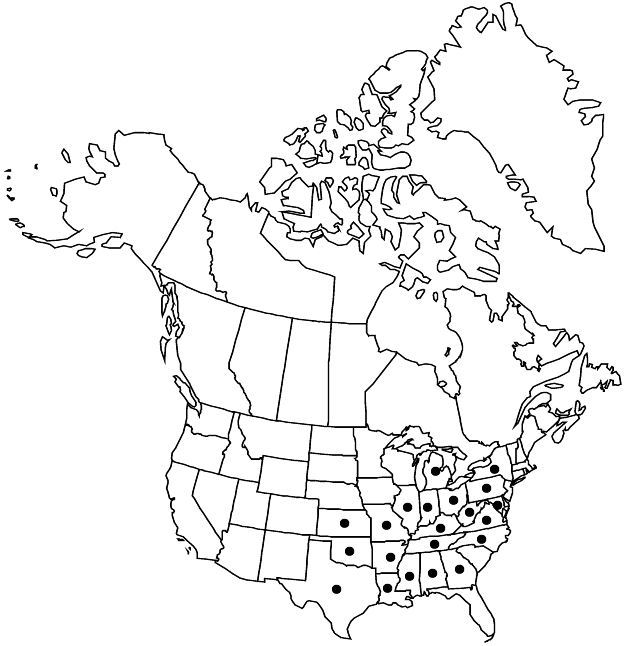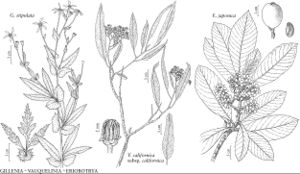Gillenia stipulata
in W. P. C. Barton, Veg. Mater. Med. U.S. 1: 71. 1817.
Common names: American ipecac Indian physic
EndemicIllustrated
Basionym: Spiraea stipulata Muhlenberge \× Willdenow Enum. Pl., 542. 1809
Synonyms: Porteranthus stipulatus (Muhlenberge \× Willdenow) Britton
Treatment appears in FNA Volume 9. Treatment on page 425.
Revision as of 14:28, 30 July 2020 by imported>Volume Importer
Leaves: stipules persistent, depressed-ovate, 10–20 (–25) × 10–20 mm (foliaceous), margins serrate to doubly serrate; leaflet blade ovate-oblong, those of proximal leaves laciniately lobed or dissected, abaxial surface densely sessile or stipitate-glandular, otherwise hirsute to hirsutulous or rarely glabrous, adaxial hirsutulous, eglandular or sparsely sessile-glandular. Hypanthia 4.5–5.5 mm. Petals 10–13 mm. Follicles long-beaked, slightly to prominently rugulose, glabrous or glabrate. 2n = 18.
Phenology: Flowering (Apr–)May–Jul.
Habitat: Rich woods, post oak woodlands, moist places in 2d-growth pine hills, low woods, ravines, stream valleys, prairie thickets, dry, rocky slopes
Elevation: 100–1000 m
Distribution

Ala., Ark., Ga., Ill., Ind., Kans., Ky., La., Md., Mich., Miss., Mo., N.Y., N.C., Ohio, Okla., Pa., Tenn., Tex., Va., W.Va.
Discussion
Selected References
None.
Lower Taxa
None.
"thin" is not a number.
... more about "Gillenia stipulata"
sessile +
aggregated +
hirsutulous +
perigynous +
dehiscent +
herbaceous +
coriaceous +
absent +
absent +
aggregated +
absent +
long-beaked +
aggregated +
rugulose +
dehiscent +
fascicles +
Rich woods, post oak woodlands, moist places in 2d-growth pine hills, low woods, ravines, stream valleys, prairie thickets, dry, rocky slopes +
persistent +
glabrous +
Present +
3(-9)-flowered +
axillary +
crassinucellate +
ternate +
alternate +
persistent +
absent +
aggregated +
leafy +
absent +
perigynous +
linear-lanceolate +
unequal +
absent +
1;250 +
in W. P. C. Barton, Veg. Mater. Med. U.S. +
1817 +
horizontal +
woody +
not arillate +
glabrous +
rugulose +
persistent +
triangular-ovate +
shorter +
simple +
red +
proximal +
capitate +
pinnate +
persistent +
free +
absent +
depressed-ovate +
deciduous +
distinct +
terminal +
glabrous +
filiform +
Gillenia stipulata +
Gillenia +
species +
gland-tipped +
hairy +
developed +
absent +
inconspicuous +
minute +
unarmed +
perennial +
